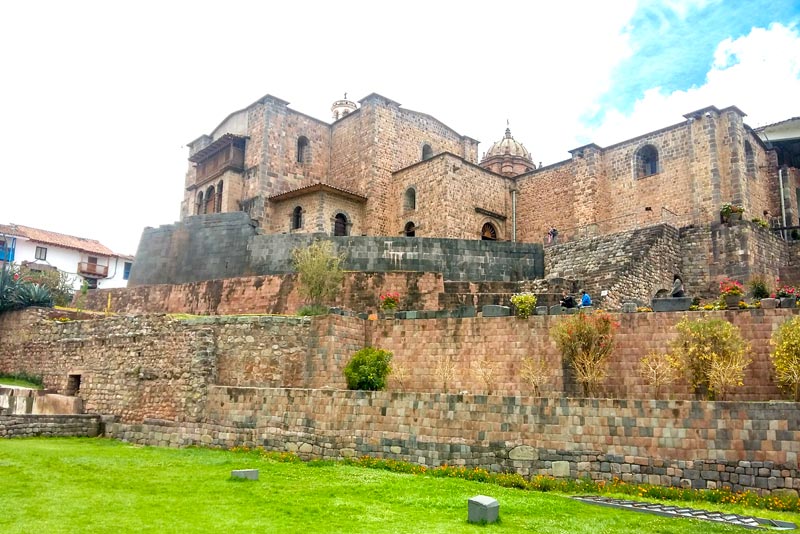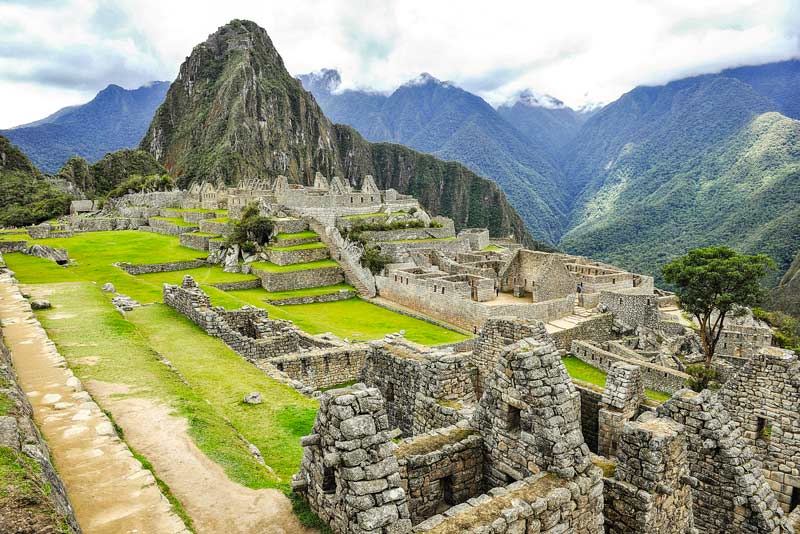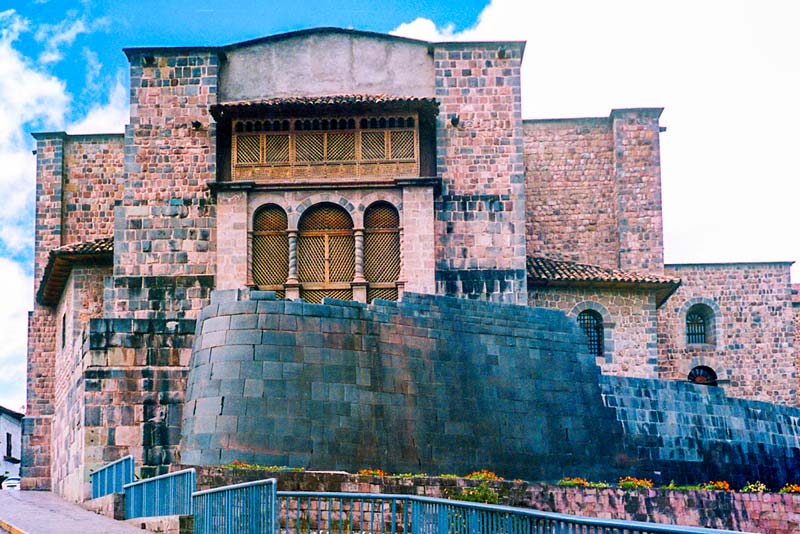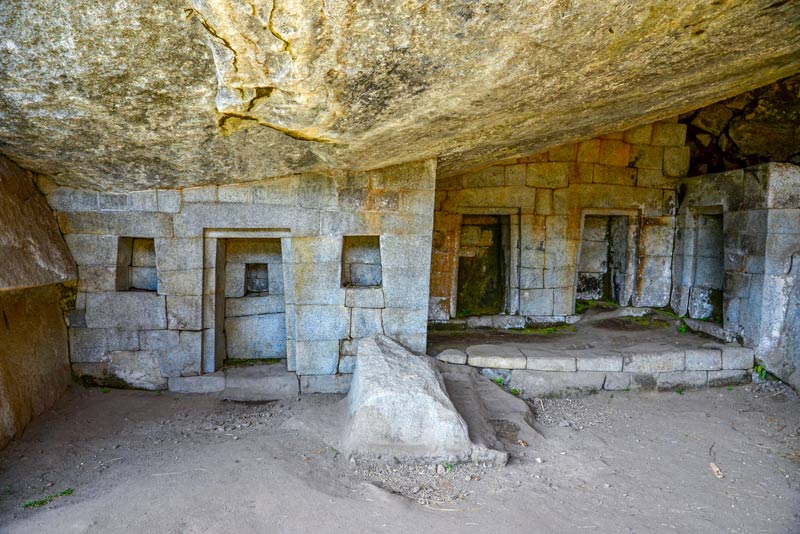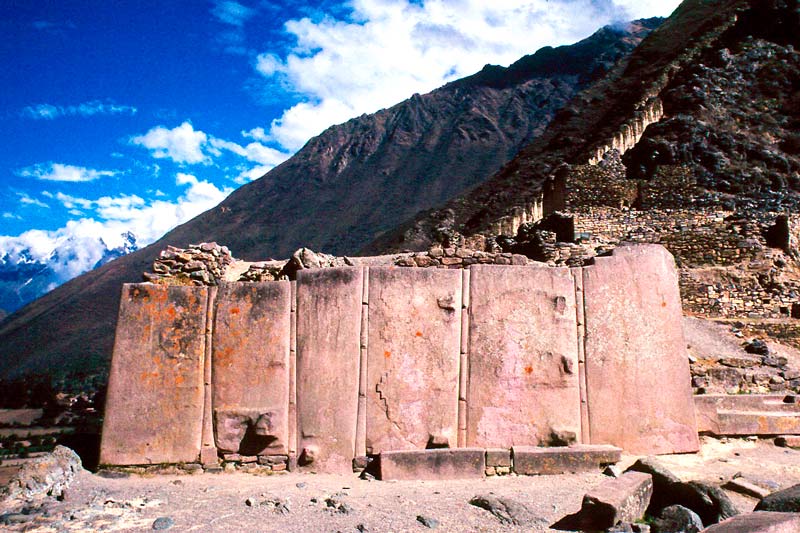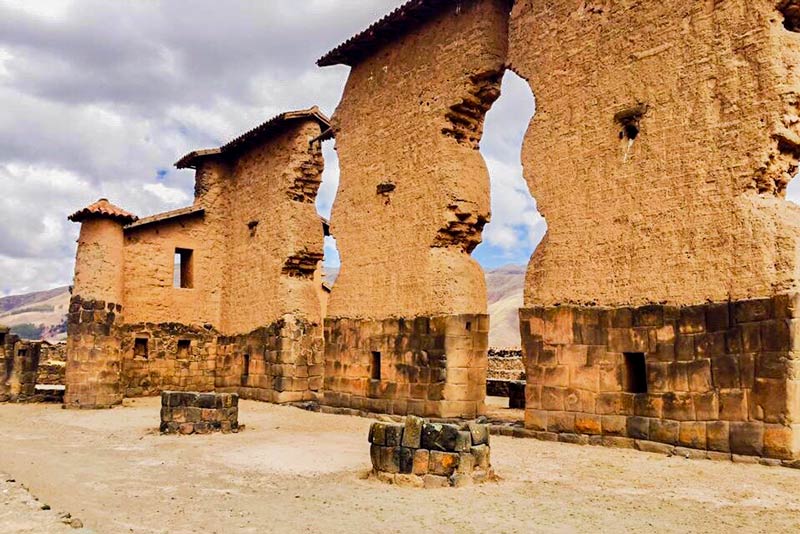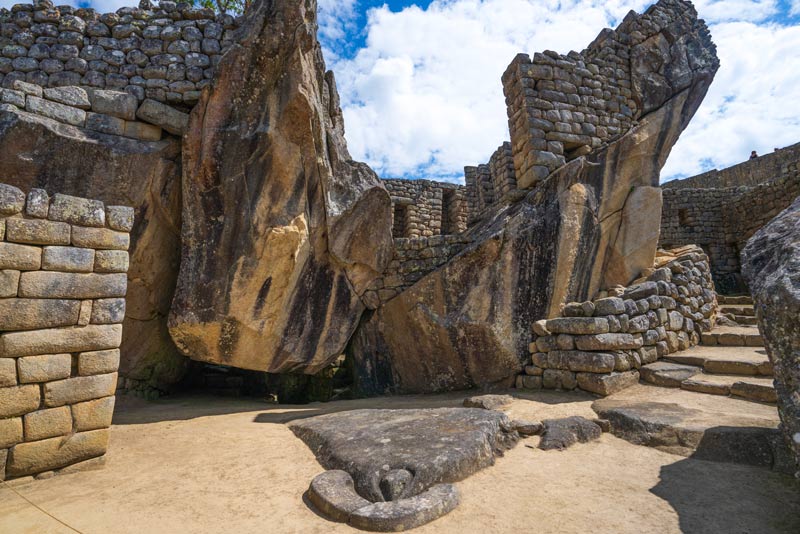Most Important Inca Temples in Cusco
Throughout Cusco, we’ll find many places steeped in history, where mysteries abound, leaving you more than awestruck by each one. Among the most important sites of the Inca culture are their temples, which were built to worship multiple deities, given their polytheistic nature. Discover which were the most significant, what their functions were, and where they are located, so you can schedule a visit to your Cusco itinerary. Don’t miss it!
- What was the importance of a Temple for the Incas?
- The most important Inca temples in Cusco
- Tips for visiting the most important Inca temples
- Frequently Asked Questions
What was the importance of a Temple for the Incas?
For the Incas, temples were places of worship for their deities. Given the polytheistic nature of the Inca culture, they had many enclosures dedicated to each of them. Among their principal deities were the god Viracocha, Pachamama (Mother Earth), Mama Quilla (goddess of the Moon), Illapa (god of lightning and storms), Mama Cocha (goddess of water), and their principal entity, Inti (god of the Sun).
Within the Inca temples, more was done than just worshipping their gods; rituals were also performed and offerings were made. They also served as ceremonial centers, astronomical sites, and political centers.
Since their construction, each temple was in constant connection with the deity to which it was dedicated, allowing one to appreciate in them characteristics of the attributed gods, thus one felt more connected to them, imbuing them with energy that many can witness to this day when visiting these places.
Furthermore, for the Inca, the main ruler of the Tahuantinsuyu empire, it was a place to find a type of connection or communication with these entities, so that he could ensure, along with rituals and offerings, a good omen from his gods.
The Cusco Tourist Ticket
If you want to visit the most impressive tourist attractions in the city of Cusco, you must purchase the tourist ticket, which offers four types of tours. The first is the comprehensive ticket, which combines three circuits and allows you to visit up to 16 destinations, including archaeological sites, museums, and cultural centers. Other options include Circuit 1, which includes Sacsayhuamán, Qenqo, Puka Pukara, and Tambomachay. Circuit 2 visits sites such as Qoricancha, Tipón, Pikillacta, and many museums. Finally, Circuit 3 includes the most important archaeological sites in the Sacred Valley, such as Ollantaytambo, Pisac, Chinchero, and Moray.
The most important Inca temples in Cusco
If you’re visiting Cusco and want to see the most important Inca temples, we’ll provide a list of the main features of each one, so you can have a much more immersive experience when visiting them. Discover their main mysteries and marvel at their impressive constructions.
Qoricancha (Cusco)
The Qoricancha was probably the main temple of the Inca culture and was primarily intended for the worship of the sun god. Today, on its foundations, we can see the Church of Santo Domingo, where, despite the passage of time, many pieces and enclosures intended for the veneration of their gods are still preserved.
Furthermore, being such a large place, it also provided a place for the worship of other deities, as within it we can see a hall for the stars, a hall for the rainbow, and a hall for lightning. Other attractions include its ceremonial fountain, the sacrificial hall, and its sacred gardens.
Visiting it is very easy, as it’s located in the city center. You just need to purchase a Cusco tourist ticket.
Temple of the Moon (Machu Picchu)
One of the most impressive structures we’ll find in Machu Picchu is the mystical Temple of the Moon. This site can be visited with the ” Machu Picchu with Temple of the Moon or Great Cavern (Route 3C)” ticket, which takes us to the site after a hike of approximately one hour.
The entire site is surrounded by lush vegetation, giving it an even more magical view. The Temple of the Moon is built within a natural cave, where we can appreciate delicate structures with small doorways and windows that blend perfectly with the immense surrounding rocks.
This place served as a place of worship for the moon, as well as for sacrifices. Caves were closely linked to the world of the dead in Inca culture, which is one of the reasons for their great importance.
Temple of the Sun (Ollantaytambo)
One of the main enclosures found in the architectural fortress of Ollantaytambo is the Temple of the Sun, which is made up of six immense stone monoliths that form an impressive wall.
Although it is said to have never been completed, high-relief carvings can be seen on its surface, such as chakanas in the form of stairs (they symbolized the Andean worldview: “Hanan Pacha” (celestial plane), “Kay Pacha” (earthly plane), and “Ukhu Pacha” (underworld). You can also see the presence of four pumas, considered one of the most sacred animals to the Incas.
To see it, we just need to purchase the Cusco tourist ticket and visit Ollantaytambo on our trip to Cusco.
Water Temple (Cusco)
Tambomachay, also known as the Water Temple, is a place of worship for water, given its importance as a source of life. It also showcases the Inca culture’s impressive knowledge of hydraulic engineering, as the site features stone canals that flow year-round, to this day.
This site was built over a river and springs; its impressive layout will surprise you, given that the water continues to flow after approximately 600 years.
To visit the Water Temple, or Tambomachay, you must purchase a Cusco tourist ticket. This site is located 25 minutes from the city.
Temple of Wiracocha (Raqchi)
According to many Andean cultural beliefs, the god Wiracocha was the creator of the universe, which is why the Raqchi temple was built in his honor. This site stands out for its immense stone and adobe walls, fourteen meters high, located on an esplanade full of windows and doorways. Its dimensions are very extensive, given that it had a roof supported by columns up to twenty-five meters high at its highest point. For this reason, it was considered the largest temple in the Inca Empire.
Within the site, we’ll also see some enclosures that served as warehouses or homes, some water fountains, and the “largest Inca temple,” where we’ll appreciate more of its impressive architecture.
To reach the Temple of Wiracocha, we must first travel to Raqchi, which is located 2 hours and 30 minutes from the city of Cusco. Entrance is through a ticket sold at the site.
Temple of the Condor (Machu Picchu)
The most impressive temple honoring an animal sacred to Inca culture is the Temple of the Condor, which can be visited on our tour of Machu Picchu, specifically with one of the four tickets that take you to circuit three.
This place is located next to a cave, where rocks were molded to form the condor’s wings. Below them, we’ll also see a triangular stone structure with the condor’s beak and its characteristic neck plumage at one corner.
During the tour, we can see the cave located at a short distance. It is said that this was where mummies were placed, as well as to pay tribute to their deities.
| Most important Inca temples | ||||
|---|---|---|---|---|
| Inca Temple | Location | Main Deity | Highlighted Features | Access |
| Qoricancha | Cusco | Inti (Sun) and minor deities. | Enclosures for the sun, stars, rainbows, lightning, ceremonial fountains, and sacred gardens. | Cusco Tourist Ticket. |
| Temple of the Moon | Machu Picchu | Keel (Moon) and world of the dead. | Built inside a natural cave, harmonized with the rocks and used for ritualistic purposes. | “Machu Picchu with Temple of the Moon (route 3C)” ticket. |
| Temple of the Sun | Ollantaytambo | Inti (Sun) | Six enormous stone monoliths with reliefs of chakanas, pumas and Andean symbols. | Cusco Tourist Ticket. |
| Water Temple (Tambomachay) | Cusco | The water | Stone-carved canals, still-functioning fountains, and advanced hydraulic architecture. | Cusco Tourist Ticket. |
| Temple of Wiracocha | Raqchi | Wiracocha (Creator of the universe) | 14-meter-high stone and adobe walls, columns, windows, and ceremonial spaces. | Entrance at the same site. |
| Temple of the Condor | Machu Picchu | Condor | Fusion of rocks in the shape of a condor and the presence of a cave for mummies and offerings. | Machu Picchu ticket (circuit 3) |
| Intihuatana | Machu Picchu | Sun | Ritual stone for measuring solar time (solstices), astronomically aligned. | It is only possible to see it from afar. |
| Temple of the Three Windows | Machu Picchu | Andean worldview | Three large windows representing the three worlds of the Andean worldview: Hanan Pacha (upper world), Kay Pacha (earthly world) and Ukhu Pacha (lower world) | Machu Picchu ticket (circuit 3) |
Tips for visiting the most important Inca temples
To ensure you have a better travel experience visiting the most important Inca temples, we’ll share a series of tips and recommendations that will help you and keep you informed when visiting each of the sites. Learn about them:
- You’ll find most of the most impressive Inca temples in Machu Picchu, so schedule your visit to this wonder of the world and don’t miss one of the best experiences of your life.
- Visiting one of the temples will immerse us in a place charged with ancestral energy, where we can learn more about its history and gain a first-hand experience, which is the most valuable experience of all.
- Before embarking on strenuous hikes in Cusco, remember to rest at least once a day to avoid altitude sickness and better enjoy your stay.
- If you visit Cusco during the rainy season (November–March), be prepared for each of your trips with waterproof clothing or a rain poncho, as the weather can change at any time.
- Visiting Cusco during the dry season (April to October) will offer clearer, more colorful weather, although there are usually more visitors.
- For a more immersive travel experience, we recommend visiting each of the main Inca temples, so you can discover different perspectives on their culture, architecture, and history.
- Take advantage of your tour of Cusco and calmly enjoy each of the landscapes you will find, its geography will allow you to have moments of introspection and peace.
- To enhance your travel experience in Cusco, give thanks to Pachamama (Mother Earth) for every surprising moment along the way, just as they do in Andean culture.
- Remember that along with Boletomachupicchu, you can book experiences and tours throughout Cusco. Ask our advisors about all the options available.
Frequently Asked Questions
1) Which Inca temples can be visited with the Cusco Tourist Ticket?
The Cusco Tourist Ticket allows access to several important temples and archaeological complexes such as Qoricancha, Sacsayhuamán, Qenqo, Ollantaytambo and Pisac.
2) What is the most important Inca temple in Cusco?
The Qoricancha temple is considered the most important in the entire Inca Empire, it was dedicated mainly to the Sun god (Inti).
3) What is the largest temple built by the Incas?
The Temple of Wiracocha, located in Raqchi, is considered the largest temple of the Inca Empire.
4) What Inca temples are located in Machu Picchu?
Within Machu Picchu you can visit several sacred temples such as the Temple of the Sun, the Temple of the Condor, the Temple of the Three Windows, and the Temple of the Moon.
5) What is the best time of year to visit the Inca temples?
The best time to visit temples is between April and October, when the weather is drier and the skies are clear. During these months, it’s easier to appreciate the landscapes and structures without rain, although tourist numbers are also higher.
6) Are Inca temples still used for ceremonial purposes?
Yes, some temples like Qoricancha and Sacsayhuamán are still used for Andean rituals, especially during Inti Raymi, which is celebrated every June 24.
7) Are there any little-known Inca temples worth visiting?
Definitely, places like the Temple of the Moon (in Machu Picchu) or the Temple of Wiracocha in Raqchi (off the traditional tourist circuit) offer less crowded experiences.
8) What functions did temples serve in Inca culture?
Temples were not only places of worship, but also ceremonial, astronomical and political centers.
9) Why are some Inca temples built over caves?
Caves were considered portals to Ukhu Pacha, the inner world or underworld. For the Incas, these natural spaces were sacred, and building temples within them allowed for a direct connection with ancestral spirits.
10) How did the temples relate to the natural environment?
Inca architecture respected and integrated itself into the landscape. Many temples were built in strategic locations near sacred mountains (apus), rivers, or caves.
Advice from people who have been there
 By: Aron R.
By: Aron R.“Condor Temple Experience“
“The place fascinated me, the architecture of the place leaves you speechless, a hidden place in Machu Picchu that you definitely have to visit.“
By Ticket Machu Picchu – Last updated, June 4, 2025
